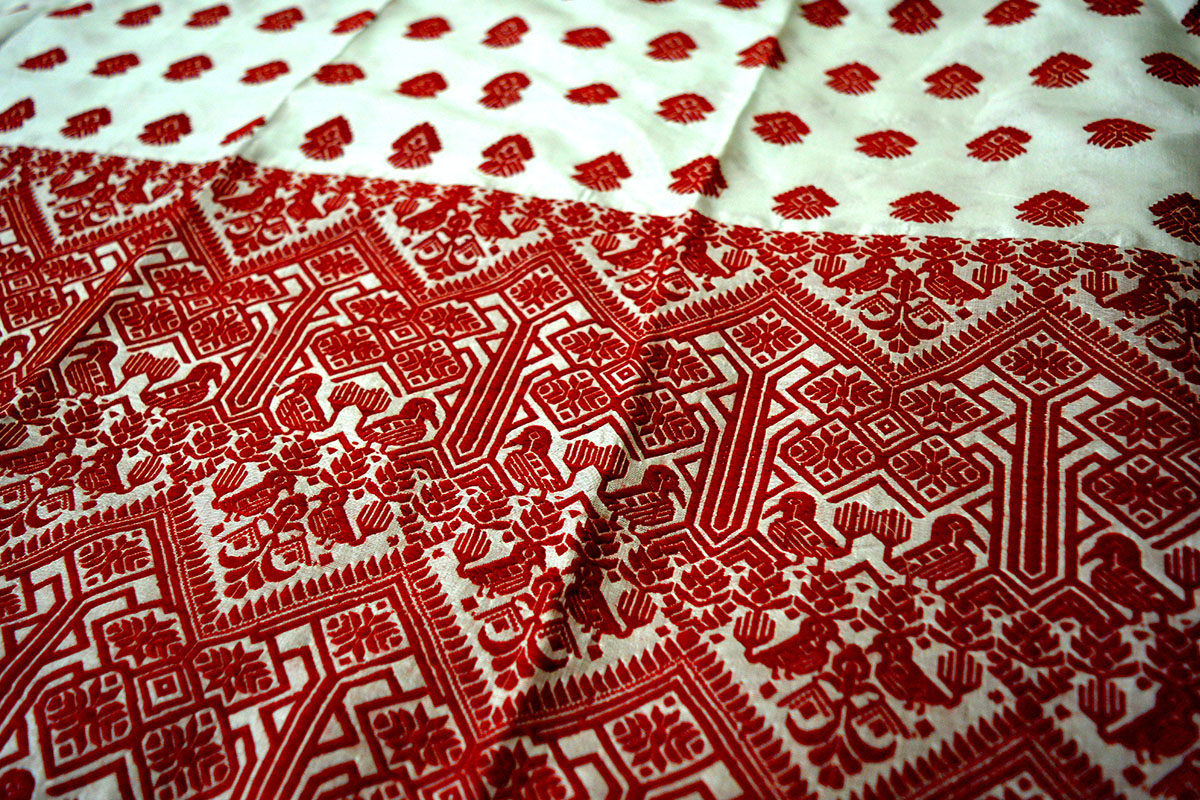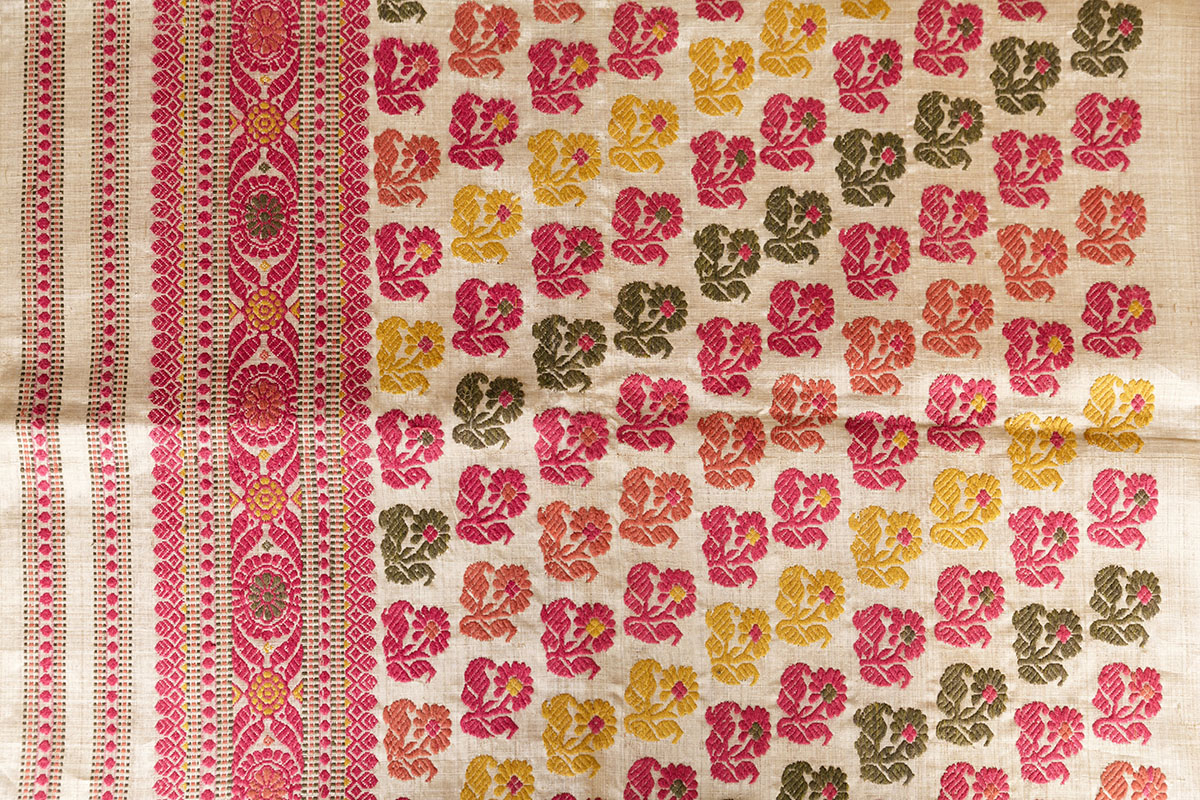ARTICLE
Mekhela Chador
A traditional, hand woven garment of Assam, the mekhela chador is a handwoven, two-piece attire worn by the women from the region. The mekhela is the lower piece, a sarong-like fabric that is wrapped around the waist like a skirt. Unlike a traditional saree, the pleats in the mekhela are fewer in number, and are made on the right side and tucked in. The top garment is typically a blouse and, for specific occasions like the festival of Bihu, it is the traditional, long sleeved red blouse. In earlier times, an unstitched garment known as the riha was wrapped around the upper body instead of a blouse. The chador, also called the cheleng, is a long unstitched fabric measuring approximately 2.81 x 1.25 m, one end of which is tucked into the top of the mekhela using triangular folds, while the other end is wrapped around the top half of the body.
The mekhela chador can be of three types: Muga, Eri and Pat, based on the kind of silk used to weave it. The most prominent centre for the production of the mekhela chador in Assam is the town of Sualkuchi, which has been a hub of sericulture and silk weaving since the eleventh century.
While it resembles the langa voni and the pavada davani of South India, unlike these, the mekhela chador is draped with pleats and can be worn by women of all ages. Different variants of the mekhela chador are worn by different Assamese tribes, such as the Yakan Age-Gasar, which is worn by the Mishing tribe and is black in colour.
Bibliography
Our website is currently undergoing maintenance and re-design, due to which we have had to take down some of our bibliographies. While these will be re-published shortly, you can request references for specific articles by writing to hellomapacademy@map-india.org.








